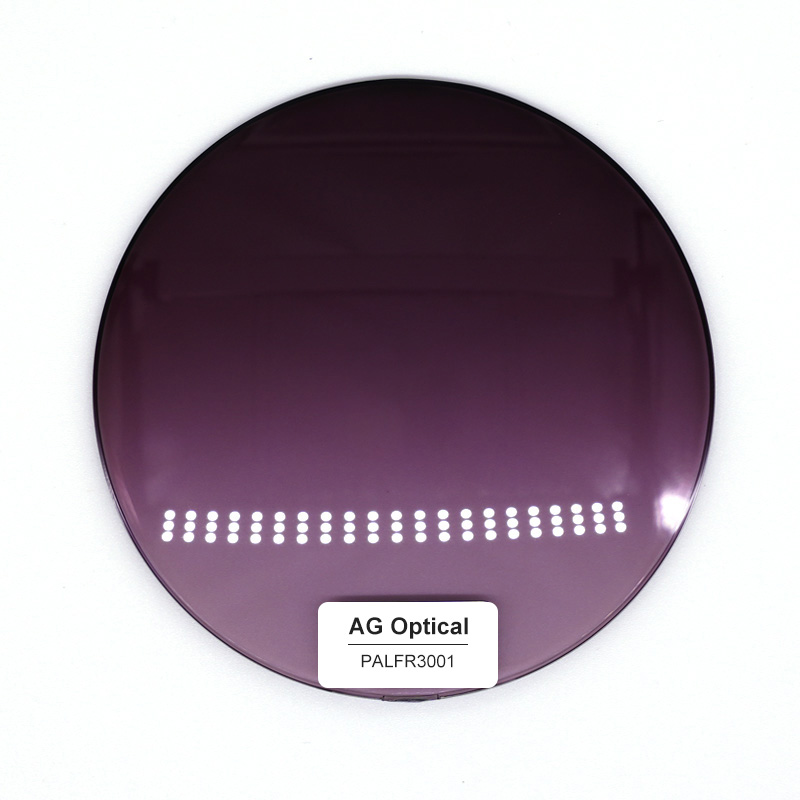The difference between photogradient lenses and polarized lenses
Photogradient lenses and polarized lenses are two different optical lenses.
Photogradient lenses are lenses that can automatically adjust the transmission of light. It uses photochromic technology, which can automatically adjust the color and transmittance of the lens according to the intensity of light. Under strong light, the lens will become darker, reducing light transmission, thereby protecting the eyes from the stimulation of strong light. In low light, the lenses become transparent, allowing more light to pass through for greater visual clarity and comfort. Photogradient lenses are suitable for use in outdoor environments, such as driving, participating in outdoor activities, etc.
Polarized lenses are lenses that filter out reflected light. It can effectively eliminate the interference of reflected light from water, glass, snow and other surfaces, thereby reducing eye fatigue and improving visual clarity. Polarized lenses have a special polarized optical layer that only allows light in the vertical direction to pass through when the light is transmitted, while the reflected light in the horizontal direction is filtered out. Therefore, polarized lenses can significantly reduce the interference of glare and reflected light, and improve the clarity and contrast of vision. Polarized lenses are suitable for use in outdoor strong light environments, such as fishing, skiing, beaches, etc.
Generally speaking, photogradient lenses and polarized lenses are two different optical lenses, which are suitable for different environments and purposes. Photogradable lenses can automatically adjust light transmission and are suitable for use in outdoor environments, while polarized lenses can filter out reflected light and are suitable for use in outdoor environments with strong light and strong reflected light.
Photogradable lenses and polarized lenses are optical lenses that have been widely used in recent years, and their application fields include outdoor sports, driving and daily life. Below I will introduce the characteristics and applicable scenarios of these two lenses in detail:

Photogradient lenses:
Photogradable lenses are generally composed of two layers of materials, the outer layer is a UV protection layer, and the inner layer is a photochromic layer. The photochromic layer is composed of a variety of chemical substances. When it is irradiated by ultraviolet rays, a chemical reaction will occur to darken the color of the lens, which can effectively reduce the stimulation of strong light. Under low-light exposure, the photochromic layer gradually returns to its original state and the lenses become transparent for improved visual clarity and comfort.
The advantages of photogradient lenses include:
1. Automatic adjustment of light transmission: Photogradient lenses can automatically adjust the color and transmittance of the lens according to the intensity of light, without the need to manually replace the lens or wear multiple pairs of glasses.
2. Eye protection: Photogradable lenses can effectively reduce the stimulation of strong light and reduce the risk of eye fatigue and injury.
3. Increased visual comfort: Under low-light exposure, the photogradient lenses become transparent, improving visual clarity and comfort.
4. Multifunctional use: Photogradient lenses are suitable for many outdoor activities, such as driving, cycling, mountain climbing, etc.
Polarized lenses:
Polarized lenses are composed of two parallel polarizers, which can filter out reflected light so that the light only travels in a specific direction. The design of this polarizer can effectively eliminate the interference of reflected light from surfaces such as water, snow, glass, etc., thereby reducing eye fatigue and improving visual clarity. Polarized lenses also increase contrast and color vibrancy for clearer vision.
The advantages of polarized lenses include:
1. Eliminate reflected light: Polarized lenses can effectively eliminate the interference of reflected light from surfaces such as water, snow, and glass, and improve visual clarity and contrast.
2. Eye Protection: Polarized lenses can reduce eye fatigue and the risk of injury, especially during prolonged exposure to bright light.
3. Enhance color vividness: Polarized lenses can increase color vividness and make visual effects clearer, especially in outdoor environments.
4. Multifunctional use: Polarized lenses are suitable for many outdoor activities, such as fishing, skiing, beach and so on.
It should be noted that although photogradient lenses and polarized lenses can both reduce glare and improve visual effects, their principles and effects are different, so you need to choose according to your actual needs when choosing. If you need to automatically adjust the light transmittance in outdoor environments, it is recommended to choose photogradient lenses; if you need to eliminate reflected light interference and enhance color vividness in outdoor environments, it is recommended to choose polarized lenses.
